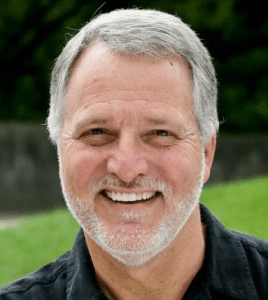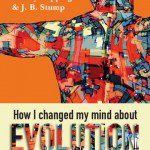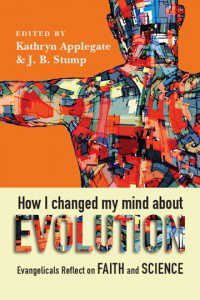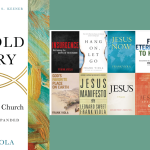 In popular imagination, even the imagination of of many trained in technical fields, evolution is a messy, chaotic, highly contingent and random process. Mark Whorton in Peril in Paradise comments that while he finds the evidence for an old earth convincing, the evidence for evolution is far less convincing. Most importantly, as a Christian he does not think that the origin and diversity of life is some lucky accident.
In popular imagination, even the imagination of of many trained in technical fields, evolution is a messy, chaotic, highly contingent and random process. Mark Whorton in Peril in Paradise comments that while he finds the evidence for an old earth convincing, the evidence for evolution is far less convincing. Most importantly, as a Christian he does not think that the origin and diversity of life is some lucky accident.
Is the acceptance of evolution a commitment to contingent randomness?
This image of randomness in evolution was made most emphatically by Stephen Jay Gould. Run the tape over and something entirely different will emerge. From his 1994 article in Scientific American (v. 271, pp. 84-91) The Evolution of Life:
History includes too much chaos, or extremely sensitive dependence on minute and unmeasurable differences in initial conditions, leading to massively divergent outcomes based on tiny and unknowable disparities in starting points. And history includes too much contingency, or shaping of present results by long chains of unpredictable antecedent states, rather than immediate determination by timeless laws of nature.
Homo sapiens did not appear on the earth, just a geologic second ago, because evolutionary theory predicts such an outcome based on themes of progress and increasing neural complexity. Humans arose, rather, as a fortuitous and contingent outcome of thousands of linked events, any one of which could have occurred differently and sent history on an alternative pathway that would not have led to consciousness.
The idea that we are products of random chance and historic contingency seems at odds with any reasonable Christian theology. But evolution is not a random process where just anything can happen. Evolution is constrained by chemistry and physics. Historical contingency may well play a much smaller role in the diversity of life we see around us than suggested by Gould. Simon Conway Morris and Ard Louis, professors at the University of Cambridge and the University of Oxford respectively discuss randomness and convergence in the video below:
The point being made in this clip is that the scientific definition of randomness does not imply that something is is open-ended and purposeless. The evolutionary process is an efficient search algorithm optimizing for specific functions. In fact, the evolutionary process follows well defined roads and paths constrained by the nature of chemistry and physics. Not everything is possible, there are a limited number of possible solutions, stable points in biological space. There is no reason to conclude that evolution demonstrates that we are accidents of nature.
 If we look carefully at the chemistry of life we can go much deeper than this. Chemistry (and physics) constrain the realm of biological possibility. I recently received a new book A World From Dust: How the Periodic Table Shaped Life (Oxford University Press) by Ben McFarland that digs into this question of chemistry, biology and evolution. McFarland is a biochemist, and a professor and chair of the department of chemistry and biochemistry at Seattle Pacific University in Seattle Washington. He received his Ph.D. in Biomolecular Structure and Design from the University of Washington in 2001 and has been teaching at SPU since 2003.
If we look carefully at the chemistry of life we can go much deeper than this. Chemistry (and physics) constrain the realm of biological possibility. I recently received a new book A World From Dust: How the Periodic Table Shaped Life (Oxford University Press) by Ben McFarland that digs into this question of chemistry, biology and evolution. McFarland is a biochemist, and a professor and chair of the department of chemistry and biochemistry at Seattle Pacific University in Seattle Washington. He received his Ph.D. in Biomolecular Structure and Design from the University of Washington in 2001 and has been teaching at SPU since 2003.
McFarland’s take on evolution and contingency comes from his understanding of chemistry and biochemistry.
As Darwin said of natural selection, “I believe in the truth of the theory, because it collects under one point of view, and gives rational explanation of, many apparently independent classes of facts (p. 16).” What natural selection did for Darwin, chemistry does for me. In my view, a chemical sequence and chemical order shape the chaos of biology and history in surprising, yet rational ways, explaining many facts. It is a long story, but it coheres with chemical logic, and it shows that the nature of history is ordered by chemistry. That has reshaped the way I look at every blade of grass and every rock on the beach. I hope you enjoy thinking about this old subject in this new way. (p. xiv)
This history talked of here is not human history, but natural history … the origin of the diversity of life and the convergence on similar solutions in multiple cases. McFarland plays off of the famous image of Gould’s tape of life to suggest that the tape played many times would come up with similar solutions to essential problems. Evolution is far less contingent that many suppose.
McFarland is a Christian, and this, of course, shapes his views as my Christian faith shapes mine. But I will also point out that I have colleagues who are not at all religious and are investigating the essence of the chemical toolbox in a manner consistent with McFarland’s approach. I have sat through a number of talks at scientific meetings on this very subject in one fashion or another. As a chemist myself (Ph.D. 1986 UC Berkeley) I find McFarland’s approach compelling and fascinating.
Ben’s book is written for non-scientists (although some basic understanding of chemistry will help). There is a glossary of terms that will help the scientific novice and copious references at the end to direct the interested reader into the literature and more detailed discussion of the various points that are raised.
There is also an accompanying video series available YouTube.This trailer provides a short introduction.
The premise of the book is that 12 rules (colorful rules in the video series) shape life.
Somewhat longer videos – 7 minutes or so – dig into the concepts of each of the 12 rules and 12 chapters. The video below goes with the first chapter.
Several years ago scientists in California made a sensational announcement – life in Mono Lake could use arsenic (normally a poison) in place of phosphorous. Despite the media attention, most chemists were rather skeptical. Some things just didn’t seem to add up. Subsequent experiments proved the skeptics right. But the reasons for this deep skepticism are fundamental to McFarland’s argument. Chemistry constrains possibility and arsenic, for a number of sound chemical reasons, simply isn’t a good substitute for phosphorous.
Over the next several months I will dig into McFarland’s book looking at the arguments presented in each chapter. If you are interested, pick up a copy and follow along.
Is evolution an intrinsically random process?
What kind of control would you expect God to exercise over the process?
What role could chemical and physical constraints play in your understanding of creation?
If you wish to contact me directly you may do so at rjs4mail[at]att.net
If interested you can subscribe to a full text feed of my posts at Musings on Science and Theology.


















